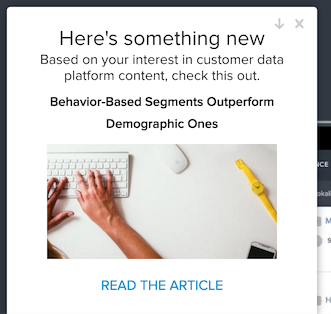Six Considerations Before Starting a Single Customer View Project
January 26, 2017The ambition to build an enterprise Single Customer View (SCV) database is typically instigated by the marketing team. However creating a unified, aggregated and cleansed record of every customer from your many data sources will require the input from many other departments, too.
As you can imagine, each of these departments are likely to have their own objectives with what they hope an SCV will achieve, meaning several things need to be considered before a project is undertaken.
- Getting cross-department commitment
While marketing is seen as having the most to gain from an SCV, it can also benefit other departments, such as sales, finance and HR.
While this will make it easier to build a business case for the project, it can risk other departments ‘muscling in’ with their own sets of requirements, making the project more complex, expensive and time consuming. It needs to be clear from the start who will take ownership on the SCV and what its primary objective is – marketing!
- Getting hold of source data
As data is owned by different teams (both internal and external), getting hold of source data is one of an SCV project’s biggest challenges. It requires company-wide coordination to ascertain different data sources, while IT are traditionally heavily involved to manage the creation of automated data feeds from source systems.
Customer Data Platforms are making this easier, but the creation of the SCV will also require input from the likes of sales, finance and operations in order to a holistic customer view for matching, enhancing and supressing data.
- Do you want fixed price or agile development?
As with any project, organizations are concerned about costs and keeping the project on course. Typically, an SCV project will use the following models:
- Fixed price – a fixed price and fixed timeline project offers reassurance, but will require in-depth knowledge of the data sources and rules in order to determine costs and time.
- Agile – a flexible timeline and budget model with the SCV developed in ‘sprints’ allows quicker deliverables, agile response to unexpected opportunities and moveable priorities but this option can be prohibitive for organisations with a set budget.
- Allocating the right resources
It may be that marketing ‘owns’ the SCV, but it is rare for marketing teams have the resources or experience to manage data and run an SCV project. Finding people within the business who understand the different data sources and business rules is essential.
- What data are you going to use?
Determining the values and benefits of different data sources up front is important and you need to be realistic about the volume of data feeding the SCV. Can marketers make sense of hundreds or thousands of fields of data?
That said, there are some essential data sources that all SCV should consider, including:
- Personal information – name, address, email, phone numbers
- Transactional data – what they have bought in the past and their buying patterns
- Communication history – response to emails, click through, open times to shape future communications
- Geodemographics – age bands, affluence and lifestyle information to improve segmentation
- Suppressions – opt ins and opt outs, telephone preferences and bereavement registers, etc.
These data sources provide great insight to deliver far more innovative and relevant campaigns. By ensuring that your data is trustworthy, it ensures that any segmentation or analysis provides true answers and accurate business intelligence.
- Identifying your customer
You want to build a Single Customer View – but who is your customer? The answer is straightforward for B2C organizations, but less so in the world of B2B. For example, is your ‘customer’ the business or an individual within the business? Are you dealing with head office, or multiple branch locations?
Summary
The process of unifying your customer data needs plenty of deliberation while you establish your requirements. Don’t forget, a Single Customer View on its own will achieve very little if it is not contained within a platform that makes it accessible to your existing marketing tools. However, as long as you have realistic expectations of what you want the system to deliver, you’ll have the foundations in place for more efficient and effective marketing.


